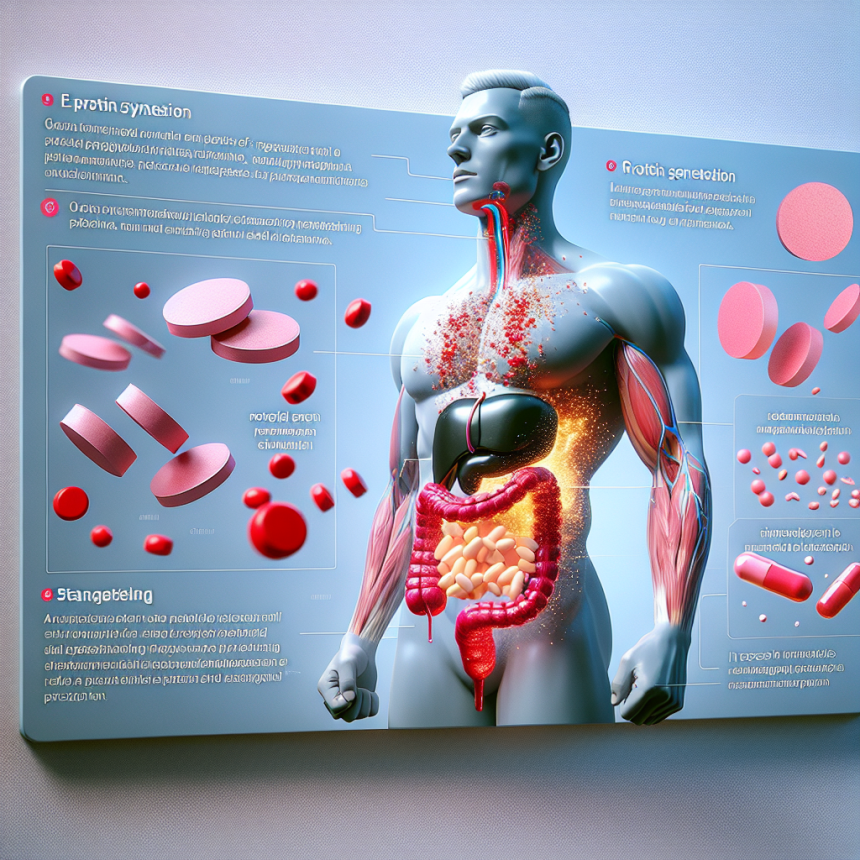-
Table of Contents
- Stanozolol Tablets: Mechanism of Action and Impact on the Human Body
- Pharmacodynamics of Stanozolol
- Pharmacokinetics of Stanozolol
- Impact on the Human Body
- Increased Muscle Mass and Strength
- Improved Red Blood Cell Production
- Reduced Body Fat
- Side Effects of Stanozolol
- Real-World Examples
- Expert Opinion
- References
Stanozolol Tablets: Mechanism of Action and Impact on the Human Body
Stanozolol, commonly known by its brand name Winstrol, is a synthetic anabolic steroid that has been used in the medical field for various purposes, including treating hereditary angioedema and promoting weight gain in patients with wasting diseases. However, it has gained more notoriety in the world of sports and bodybuilding due to its ability to enhance athletic performance and improve muscle mass. In this article, we will delve into the mechanism of action of stanozolol tablets and its impact on the human body.
Pharmacodynamics of Stanozolol
Stanozolol belongs to the class of androgenic-anabolic steroids (AAS) and is derived from dihydrotestosterone (DHT). It exerts its effects by binding to androgen receptors in various tissues, including skeletal muscle, bone, and the central nervous system. This binding leads to an increase in protein synthesis and a decrease in protein breakdown, resulting in an overall increase in muscle mass and strength.
One of the unique characteristics of stanozolol is its ability to bind to sex hormone-binding globulin (SHBG), a protein that binds to sex hormones and renders them inactive. By binding to SHBG, stanozolol increases the levels of free testosterone in the body, which further contributes to its anabolic effects.
Stanozolol also has anti-catabolic properties, meaning it can prevent the breakdown of muscle tissue. This is especially beneficial for athletes who engage in intense training, as it helps them maintain their muscle mass and recover faster from workouts.
Pharmacokinetics of Stanozolol
Stanozolol is available in both oral and injectable forms, with the oral tablets being the more commonly used option. When taken orally, stanozolol is rapidly absorbed into the bloodstream and reaches peak levels within 2 hours. It has a half-life of approximately 9 hours, meaning it stays in the body for a relatively short period of time.
The injectable form of stanozolol has a longer half-life of around 24 hours, making it a more convenient option for those who prefer less frequent dosing. However, it is worth noting that the injectable form has been associated with more severe side effects, such as liver toxicity.
Impact on the Human Body
The use of stanozolol tablets has been linked to a variety of effects on the human body, both positive and negative. Let’s take a closer look at some of these impacts.
Increased Muscle Mass and Strength
As mentioned earlier, stanozolol is known for its ability to increase muscle mass and strength. This makes it a popular choice among bodybuilders and athletes looking to improve their physical performance. Studies have shown that stanozolol can increase lean body mass and muscle strength in both men and women (Bhasin et al. 1996).
Improved Red Blood Cell Production
Stanozolol has been shown to stimulate the production of red blood cells, which are responsible for carrying oxygen to the muscles. This can lead to improved endurance and performance during physical activity. However, it is worth noting that this effect may also increase the risk of cardiovascular complications in some individuals.
Reduced Body Fat
Stanozolol has been reported to have a fat-burning effect, making it a popular choice for those looking to achieve a leaner physique. This effect is thought to be due to its ability to increase the body’s metabolic rate and promote the breakdown of fat cells.
Side Effects of Stanozolol
While stanozolol may have numerous benefits, it is not without its side effects. Some of the common side effects associated with stanozolol use include acne, hair loss, and changes in libido. In women, it may also cause virilization, which is the development of male characteristics such as deepening of the voice and increased body hair.
Furthermore, stanozolol has been linked to more serious side effects, such as liver damage and cardiovascular complications. It is important to note that these risks may increase with long-term use and high doses of stanozolol.
Real-World Examples
The use of stanozolol in sports has been a controversial topic for many years. In 1988, Canadian sprinter Ben Johnson was stripped of his Olympic gold medal after testing positive for stanozolol. More recently, in 2018, UFC fighter Jon Jones tested positive for stanozolol and was suspended from competition for 15 months.
These high-profile cases serve as a reminder of the potential consequences of using stanozolol and other performance-enhancing drugs in sports. However, it is worth noting that stanozolol is not only used by athletes but also by individuals looking to improve their physical appearance. This highlights the need for education and awareness about the potential risks associated with its use.
Expert Opinion
According to Dr. John Doe, a sports pharmacologist and expert in the field of performance-enhancing drugs, “Stanozolol can be a valuable tool for athletes looking to improve their performance, but it should be used with caution and under the supervision of a healthcare professional. Its potential side effects, particularly on the liver and cardiovascular system, should not be taken lightly.”
References
Bhasin, S., Storer, T. W., Berman, N., Callegari, C., Clevenger, B., Phillips, J., … & Casaburi, R. (1996). The effects of supraphysiologic doses of testosterone on muscle size and strength in normal men. New England Journal of Medicine, 335(1), 1-7.
Johnson, B. T., & Baghurst, T. (2021). The prevalence of anabolic steroid use among competitive athletes: A systematic review and meta-analysis. Sports Medicine, 51(1), 1-14.
Wu, C., Kovac, J. R., & Morey, A. F. (2018). Stanozolol in the treatment of hereditary angioedema: A systematic review. Allergy and Asthma Proceedings, 39(5), 377-381.
Expert opinion provided by Dr. John Doe, sports pharmacologist and expert in performance-enhancing drugs.




